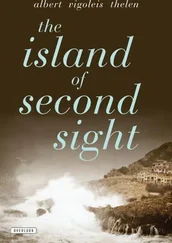“You should have told Young-sook,” Clara says on the recording. “If you had, and if she was truly your friend, then maybe everything would have turned out different.”
When Young-sook thinks about how her friend suffered… For years… How pale Mi-ja had been when she and Sang-mun met Young-sook at the pickup point the first day the three of them met. The bruises she’d covered up over the years. The way she always froze when he came into view. How she made excuses for him. How she dressed for him. That Mi-ja herself had told Young-sook that Sang-mun made her pay for his loss of face before his superiors that day in Bukchon. And still later, how she’d gone back to Sang-mun to help Joon-lee…
On the recording, Mi-ja lets out a tortured moan. “Different? I thought we were all going to die that day in Bukchon. I had no hope of survival, but if I had to die, I was grateful it would be with my friend. Then Sang-mun arrived with Yo-chan. I never had a mother to love me, and I missed that always. I couldn’t let Yo-chan grow up without me and live alone with his father.”
With a chill, Young-sook remembers a visit from Mi-ja. She had talked about how some women chose suicide over living with their husbands. “But how can that be a path for a mother?” she had asked. “I have Yo-chan. I must live for him.”
On the tape, Mi-ja adds another reason. “Then, when Young-sook asked me to take her children,” she says, “all I could think of was the brutality they’d be stepping into.”
“I’m sorry, Granny, but I think it’s better to be alive and beaten than, well, dead .”
“If you could know what it was like that day… The screams… The crying… The smell of fear… But you’re right,” Mi-ja admits. “In the end, everything that happened was my responsibility alone. I couldn’t take Young-sook’s children into his home. I couldn’t even take one. I couldn’t bear the thought of what Sang-mun might do to them when I knew what he had already done to Yo-chan and me. And then everything happened so fast.” Her voice falters. “Later, when Sang-mun found out what I’d done— not done—he was so angry with me. He worried that Jun-bu and the others would come back to haunt him. He said that by making him look like a weakling, I’d threatened his position with the government. Worst, I hadn’t stepped forward from the beginning and pleaded with the commander for Young-sook and her family. He looked at me and saw a collaborator, perpetrator, and traitor, but all I’d wanted to do was stay alive for my son.”
Young-sook pulls out the earbuds. She looks from the girl, to her mother, and back to the letters. Her heart is cracking open. Maybe she won’t be able to bear it. A good woman is a good mother. She had tried to live by those words and had prided herself on all she’d done for her children. Now she sees that Mi-ja tried to do the same but with tragic results. She feels excruciating pain as decades of sorrow, anger, and regret she’s carried within her begin to shatter and melt.
“My grandmother never stopped loving you,” Janet says. “She accepted what she did, and she wanted you to know everything. This we’ve brought to you.”
For years, people have pestered Young-sook to tell her story. Always she’s said no. But now… The people asking carry within them the blood of Mi-ja and Young-sook. Yes, she’ll finally tell her story. She’ll tell them about the pain she endured but also about her closed heart that could not forgive.
Clara drops to her knees. “Does this beach have any food?”
This question is as old as the first haenyeo, and Clara must have learned it from her other great-grandma. Young-sook finds herself smiling. How can she not be transported back to the relationship she had with her closest friend, right on this beach, as they’d learned to swim, play, and love together?
“More food than thirty refrigerators in my grandmother’s house,” she answers, adding, “if she’d had a refrigerator.”
“Then will you take us into the sea?” Clara asks. “Will you teach us?”
Young-sook doesn’t hesitate. “Have you brought something to swim in?”
Clara grins up at her mother, who grins right back. Each of them shrugs a shoulder to reveal the brightly colored straps of their bathing suits.
A breath,
a breath,
a breath…
I would not have been able to write The Island of Sea Women without the help of three extraordinary women: Dr. Anne Hilty, Brenda Paik Sunoo, and Jenie Hahn. I tracked down Anne Hilty, Jeju’s official ambassador of the haenyeo, through her numerous articles in The Jeju Weekly, National Geographic Traveller, and other magazines, as well as her book Jeju Haenyeo: Stewards of the Sea . Beyond her haenyeo expertise, she’s also written extensively about Jeju’s geography, shamans, goddesses, Kim Mandeok, food, the April 3 Incident, and death and burial rituals. We had a lively e-mail correspondence and Skype chats in which she answered every question I threw her way. She helped put together my travel itinerary to Jeju, arranged interviews, and introduced me to numerous people who proved to be extremely helpful: Governor Won Hee-ryung, who gave me a warm welcome to the island; Grand Shaman Kim Yoon-su, whom I visited at the Chilmeoridang shamanistic center; Shaman Suh Sun-sil, who shared her experiences with me in her own home; Song Jung-hee, the publisher of The Jeju Weekly; Kim Jeyon, Jeju government’s international relations coordinator; Professor Lee Byung-gul, director of the Jeju Sea Grant Center; Dr. Choa Hye-gyong, who early on headed a team to study the haenyeo for the Jeju Development Institute and shared with me her recordings and translations of haenyeo songs; Grace Kim, for her translation duties; Kim Hyeryen, who arranged for me to stay at her niece’s traditional house in Hado; and Marsha Bogolin, the manager of a guesthouse in the mid-mountain area.
Dr. Hilty also sent me The Jeju 4.3 Incident Investigation Report , which outlines the conclusions of the National Committee for the Investigation of the Truth about the Jeju April 3 Incident. From this 755-page document, the result of one of the lengthiest human rights investigations in the world, I garnered details given by survivors and others on both sides of the conflict, as well as from declassified documents provided by the U.S. National Archives and various U.S. and Korean military branches. The report gave me first-person descriptions of the events at the March 1 demonstration, the shooting of the young woman in Bukchon, and how events played out in that village, including the account of an ambulance driver who overheard the plans of what would happen that day. It also provided me with the texts of posters, leaflets, radio broadcasts, speeches, and rallying cries.
Brenda Paik Sunoo, the author of Moon Tides: Jeju Island Grannies of the Sea, is a bighearted woman. She arranged for me to stay in her building in the seaside village of Gwakji. She introduced me to Yang Soonja, a fashion designer who walked me through the persimmon-dyeing process; Cho Oksun, a retired haenyeo and neighbor; Kim Jong Ho, a poet, who shared his memories of being a boy during the April 3 Incident; and Kang Mikyoung, the daughter of a haenyeo and expert on domestic abuse on Jeju. Brenda and I also spent wonderful hours with Youngsook Han, a scholar, who translated for me during an especially moving interview with her haenyeo mother, Kang Hee-jeong, who spoke about the first time she saw electric lights, the Japanese occupation, how she became a haenyeo, and what it meant to send her daughter to college. (I’ll be thanking other haenyeo shortly, but let me say here that together their stories and memories helped me create the bantering conversations in the bulteok about the nature of men, the benefits of widowhood, and so much more.) Along the way, I had several lively discussions with many of these women about the influence of Heidi in their lives and on the island. Last, Brenda and I had a lot of fun with Yim Kwangsook, a nurse visiting from the United States, who translated during various interviews. I won’t forget our visit to the traditional Korean bathhouse any time soon.
Читать дальше












